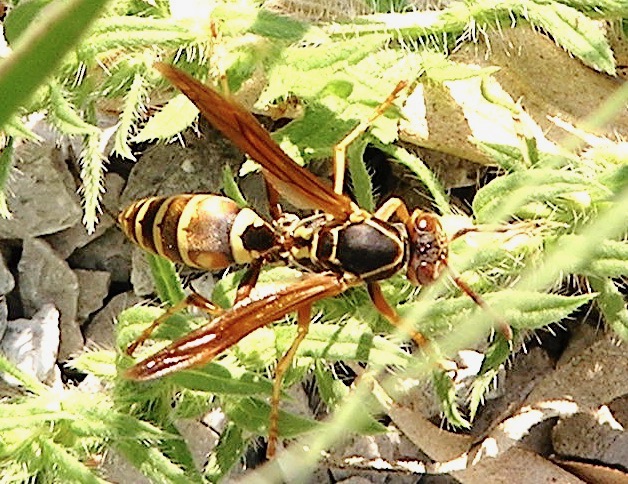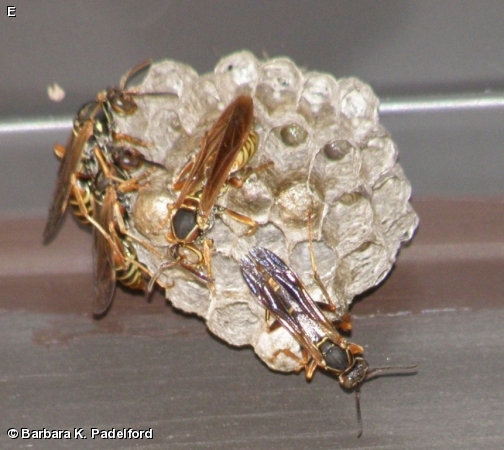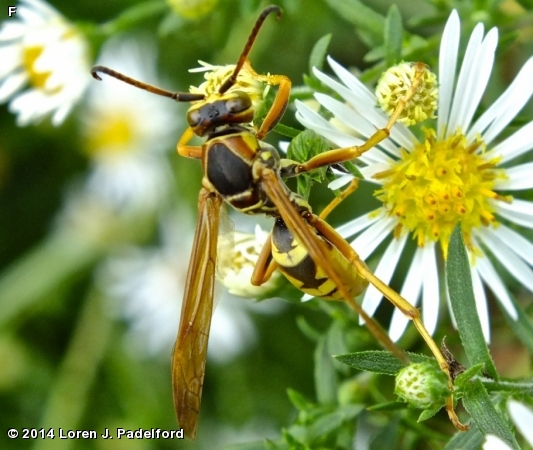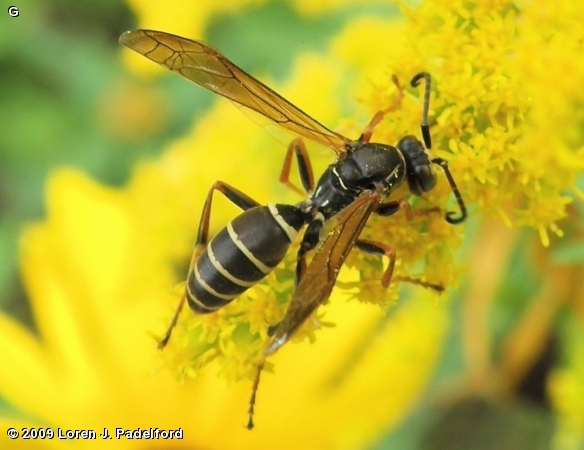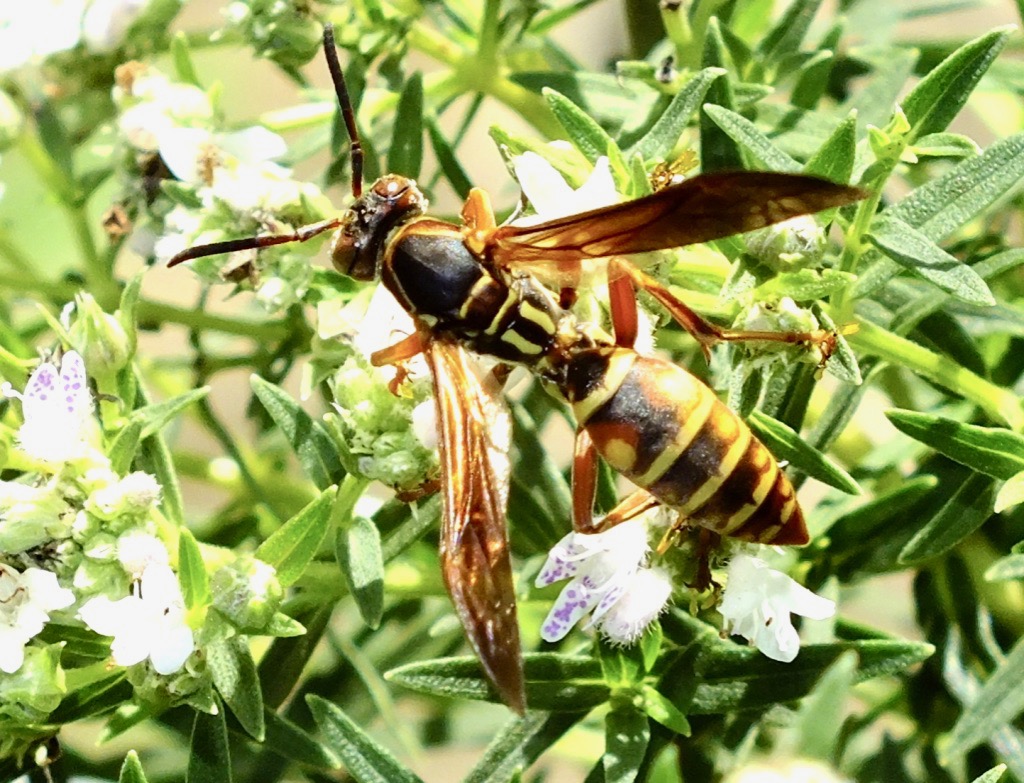
This colorful wasp is 1 inch or 25 mm in length and is red and black on the thorax. The abdomen is brightly marked with red, yellow and black bands. The eyes and the antennae are brown. The wings are tawny colored. The legs are mostly yellow. The amount of red and yellow coloring on the abdomen is extremely variable and is strongly influenced geographically. Males can be separated from females by observing the face and antennae. The male’s face is yellow and the antennae are curled at the ends.
These wasps are common from spring to late fall. They can be seen nectaring on flowers such as Goldenrod.
Fertilized queens overwinter under tree bark or in crevices. These wasps live in colonies of open combs. Polistes wasps recycle old wood by chewing it up and mixing it with saliva which turns it into paper for their nest. After a period of chewing, the female adds the paste to the nest by spreading it with her mandibles and legs. They prey on a great variety of caterpillars. These wasps are not as aggressive as Hornets and Yellowjackets, but the females will sting when disturbed. Males do not sting.
The content of NatureSearch is provided by dedicated volunteer Naturalists of Fontenelle Forest who strive to provide the most accurate information available. Contributors of the images retain their copyrights. The point of contact for this page is: Loren Padelford.

